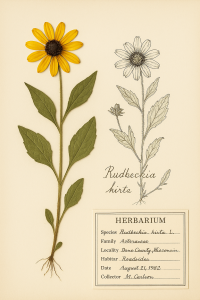5.0 | Naming & Classification of Plants

Plants represent one of the most diverse and ecologically essential groups of organisms on Earth; to study them effectively, botanists require a stable system of names and a logical framework for organizing taxa. Naming and classification provide that framework by establishing universally accepted rules for assigning Latin binomials, grouping species into hierarchical categories, and reflecting evolutionary relationships. Whether conducting floristic surveys, communicating about invasive species, or breeding new cultivars, students and professionals alike depend on clear taxonomic principles to avoid confusion and to ensure that information about any given plant can be shared accurately across languages, disciplines, and regions.
In Section 5.1, we introduce the Principles of Botanical Nomenclature, with a focus on the International Code of Nomenclature for algae, fungi, and plants. We examine the requirements for valid publication, the concept of priority, author citations, and the treatment of synonyms. Section 5.2 then explores the Taxonomic Hierarchy, from Kingdom and Phylum down through Class, Order, Family, and Genus to the Species level; here we discuss the standard suffixes, defining characters at each rank, and the importance of typification in anchoring names to specimens.
Building on those fundamentals, Section 5.3 surveys Modern Phylogenetic Classification, tracing the shift from morphology-based systems to cladistic approaches that employ DNA sequence data. We define monophyly, paraphyly, and polyphyly, and illustrate how molecular evidence reshapes our understanding of plant lineages. Section 5.4 addresses Infrageneric Ranks & Cultivar Names, clarifying the conventions for subspecies, varieties, forms, and the formally recognised cultivars used in horticulture and agriculture. Finally, Section 5.5 presents practical tools for identification—Using Floras & Dichotomous Keys—guiding you through regional floras, diagnostic key,s and best practices for field and herbarium work.
Together, these topics provide a comprehensive introduction to the language and logic of plant taxonomy. As you move into Section 5.1, consider how each rule and technique contributes to a coherent system that supports research, conservation, and communication in plant science.
Media Attributions
- Figure 5.0.1: © Generated by DALL·E via OpenAI adapted by Anthony M. Farao is licensed under a CC0 (Creative Commons Zero) license
